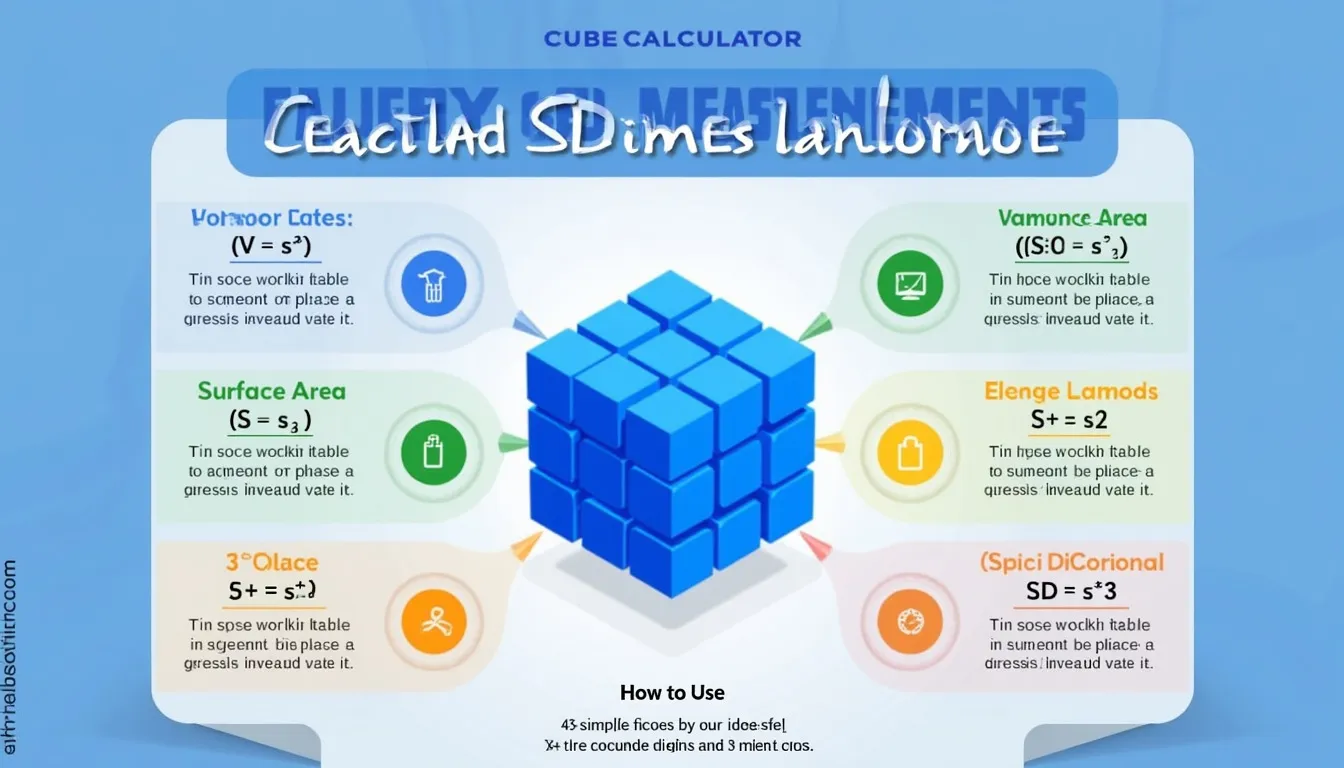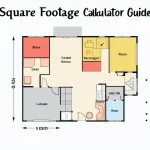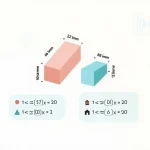Cube Calculator
Is this tool helpful?
How to use the tool
- Enter the side length in the single field. Example inputs: 3.4 or 8.9.
- Select your preferred unit mentally—metres, inches, feet, etc.—and keep it consistent.
- Click “Calculate”; the tool displays volume, surface area and space diagonal instantly.
- Read the results shown to two-decimal precision for quick reporting or further work.
Underlying formulas
The calculator uses these standard geometric equations:
- Volume $$V = s^3$$
- Surface Area $$SA = 6s^2$$
- Space Diagonal $$SD = s\sqrt{3}$$
Example calculations
- s = 3.4 units: V = 39.30 u³, SA = 69.36 u², SD = 5.89 u.
- s = 8.9 units: V = 704.97 u³, SA = 475.26 u², SD = 15.41 u.
Quick-Facts
- A cube has 6 faces, 12 edges and 8 vertices (MathWorld, Cube).
- The space-to-edge ratio is √3 : 1 for any cube (MathWorld, Cube).
- 1 m³ equals 35.3147 ft³ (NIST SP 811, 2019).
- A standard 20-ft shipping container holds ~33 m³ of “cube” (ISO 668, 2020).
FAQ
What is the volume of a cube?
Volume equals the edge length cubed: V = s³. Triple the dimension; you get space in cubic units (MathWorld, Cube).
How does the calculator find surface area?
It multiplies the area of one face (s²) by six because a cube has six identical squares (Weisstein, 2003).
Why multiply by √3 for the space diagonal?
Applying the 3-D Pythagorean theorem to three perpendicular edges gives SD = s√3 (MathWorld, Cube).
Which units can I use?
Any consistent linear unit—mm, in, ft, m—works; the outputs inherit the same base or squared/cubed form (NIST SP 811, 2019).
How accurate are the results?
The tool calculates with full JavaScript precision (≈15 digits) then rounds to two decimals for readability (ECMA-262, 2023).
Who benefits from cube calculations?
Engineers, architects, packaging designers and students rely on quick cube metrics for load, volume and material estimates (ASCE, 2022).
What’s the difference between an edge and a diagonal?
An edge is the cube’s side; the space diagonal spans opposite vertices and is √3 times longer (MathWorld, Cube).
Are cube sizes standardised?
ISO 668 fixes interior “cube” capacities for freight containers, aiding global logistics consistency (ISO 668, 2020).
Important Disclaimer
The calculations, results, and content provided by our tools are not guaranteed to be accurate, complete, or reliable. Users are responsible for verifying and interpreting the results. Our content and tools may contain errors, biases, or inconsistencies. Do not enter personal data, sensitive information, or personally identifiable information in our web forms or tools. Such data entry violates our terms of service and may result in unauthorized disclosure to third parties. We reserve the right to save inputs and outputs from our tools for the purposes of error debugging, bias identification, and performance improvement. External companies providing AI models used in our tools may also save and process data in accordance with their own policies. By using our tools, you consent to this data collection and processing. We reserve the right to limit the usage of our tools based on current usability factors.







